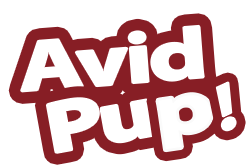
Canine Cushing’s Disease is a life-altering condition that can affect any dog breed. It’s one of the most common endocrine disorders that can affect canines and is known to cause a wide range of symptoms.
While diagnosing Cushing’s Disease isn’t always easy, understanding what’s going on in your pup’s body can help you manage their care much better.
The good news is that this disease is manageable. Dogs can live very healthy lives with Cushing’s Disease. However, you need to provide proper care. A big part of that is altering their diet.
Cushing’s Disease changes many biological functions. The change in hormonal production can wreak havoc on your dog’s system and lead to several other health problems.
Adjusting your dog’s diet may be able to help prevent those problems.
Dietary changes are all about managing the effects of the disease so that your dog can stay healthy.
What is Cushing’s Disease
Cushing’s Disease affects the endocrine system, which is comprised of glands that secrete hormones.
When a dog is diagnoses with Cushing’s Disease, it means that the endocrine system is producing far too much cortisol hormones.
Cortisol is an essential hormone that regulates several biological functions. It helps to maintain your pup’s metabolism, manages stress levels, and plays a part in controlling the immune system.
Your dog needs cortisol to stay healthy. However, having too much of it can lead to a host of problems.
Potential Symptoms
The issue with Cushing’s Disease is that it affects so many different aspects of your dog’s health.
Oftentimes, the condition goes undiagnosed because owners will focus on the secondary effects of the disease.
The symptoms of Cushing’s Disease can be very serious. To make matters worse, many dogs with undiagnosed Cushing’s Disease will experience several symptoms at once.
One of the most common symptoms to look out for is excessive weight gain. Extreme levels of cortisol throughout the body will change your dog’s metabolism.
They may develop a potbelly. Some dogs even develop fat deposits around the neck and shoulder area.
Along with weight gain, your dog might experience muscle weakness, extreme lethargy, and a host of physical issues.
Many dogs start to lose hair in patches. Bruising and overall darkening of the skin is pretty common, too.
Behavioral changes are too be expected as well.
One tell-tale sign of Cushing’s Disease is a noticeable change in appetite and thirst. The disease is known to make dogs very thirsty.
They’ll drink a lot of water, which ultimately leads to accidents at night. Pair that with excessive panting and insatiable appetite and you have the perfect recipe for health issues.
If you notice any of these symptoms, take your dog to a vet.
Veterinarians will use several tests to officially diagnose the problem. From there, you can start looking at treatment options and dietary changes.
How is Cushing’s Disease Treated?
There are two different types of Cushing’s Disease. How you will proceed with treatment and diet will depend on the diagnosis.
Adrenal-dependent Cushing’s Disease is when there’s an adrenal tumor causing the problem.
With this type of Cushing’s Disease, there’s an equal chance of that tumor being malignant or benign. As such, many veterinarians recommend surgery to remove it.
The surgical procedure to remove the adrenal tumor is complicated and risky.
Depending on the age and condition of your dog, some vets will move straight towards management techniques.
However, if the tumor is removed successfully and hasn’t spread, your dog can be cured of Cushing’s Disease completely.
The other type of Cushing’s Disease revolves around a pituitary tumor.
This is the most common form of the condition. Roughly 80 to 85 percent of all cases are related to pituitary tumors.
The good news is that there’s a low chance that the tumor is malignant. The bad news is that there’s no chance of it being removed.
Vets will typically prescribe drugs to control cortisol levels.
This is when you will need to start looking into dietary changes as well.
Diet Recommendations for Canine Cushing’s Disease
The whole purpose of making dietary changes is to manage those high levels of cortisol coursing through your dog’s body and to avoid any secondary health problems that might occur.
With higher cortisol levels, dogs are susceptible to a range of health issues.
This includes higher cholesterol, high blood pressure, digestive problems, muscle atrophy, and more. Plus, there’s the weight gain you need to worry about.
You can combat those issues by paying close attention to certain ingredients.
Protein
Many vets recommend switching to a food that’s designed for adult maintenance. Even if your dog is a senior or puppy, you need to stick to adult formulas.
Those recipes aren’t as calorie-dense as the other options. You can choose any food that meets AAFCO standards.
We recommend sticking to foods that have highly digestible protein sources.
Basic ingredients like chicken meat, beef, or lamb will do. The digestible proteins will work alongside good fiber content to keep your pup regular.
Fat and Fiber
Now, to address cholesterol levels. The best way to keep cholesterol low is to go with a low-fat formula.
At the most, fat should make up less than 12 percent of the formula on a dry matter basis.
A moderate amount of fiber is good, too. The fiber will take care of digestive problems while also managing cholesterol.
Your dog’s food should have somewhere between 8 to 17 percent on a dry matter basis.
Sodium
Sodium isn’t something that too many dog owners pay attention to when shopping for food. But for dogs with Cushing’s Disease, it’s important.
Too much sodium can raise your dog’s blood sugar higher than it already is. So, stick with formulas that are low in sodium but high in chloride.
What About Supplements?
Supplements can help to keep your dog in good health.
We recommend consulting with your vet for exact recommendations. They will be able to give you a better idea of what types of supplements will benefit your dog.
Typically, vets will recommend supplements that introduce antioxidants into your dog’s system.
Things like beta carotene, Vitamin C, Selenium, and more can help regular blood fats.
The same goes for fish oil, which can also help control cholesterol levels. It also has the added perk of improving any skin issues that Cushing’s Disease causes.
Also read: 10 Food Boosters You Can Add to Your Dog’s Regular Meal
Going Raw
Some dog owners choose to switch to a raw diet to manage Cushing’s Disease. Raw diets have become increasingly popular because it closely mimics what dogs ate before domestication.
Not only that, but it gives you the chance to have greater control over what’s going into your dog’s diet.
If you’re thinking about switching your dog to a raw diet, consult with your vet.
Like providing dry food, creating a raw diet is about controlling certain macronutrients and introducing the right supplements.
Your vet can help you out in that arena and make sure that your dog is getting everything they need.
Conclusion
Cushing’s Disease doesn’t have to be a death sentence. There’s a lot that you can do to manage your dog’s health. It all starts with examining what your pup is consuming.
By making those necessary diet changes, you can better control their body’s response to the disease.
Also Read: Avoid These Mistakes When Storing Dog Food

